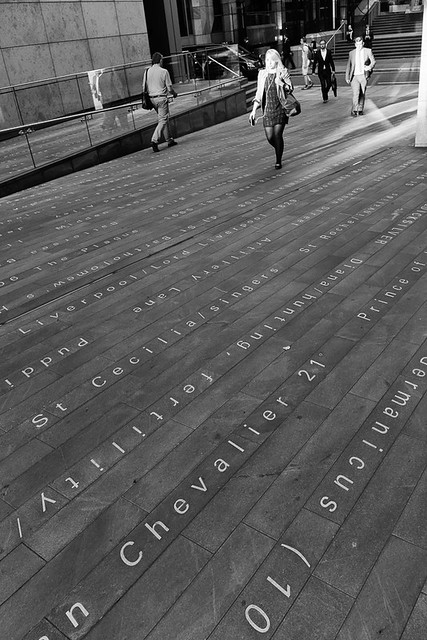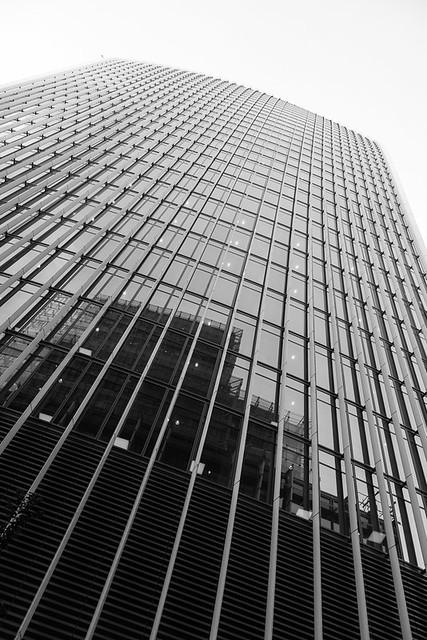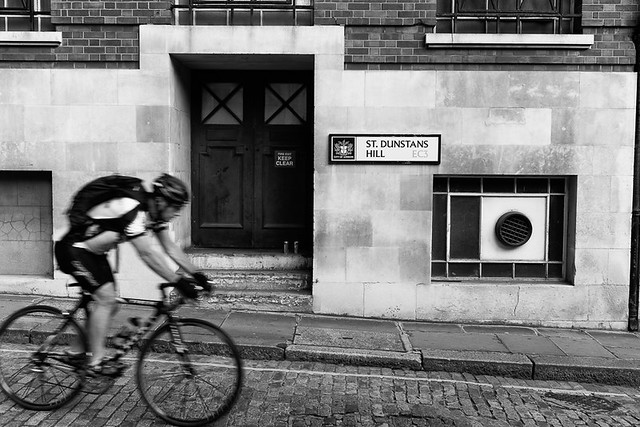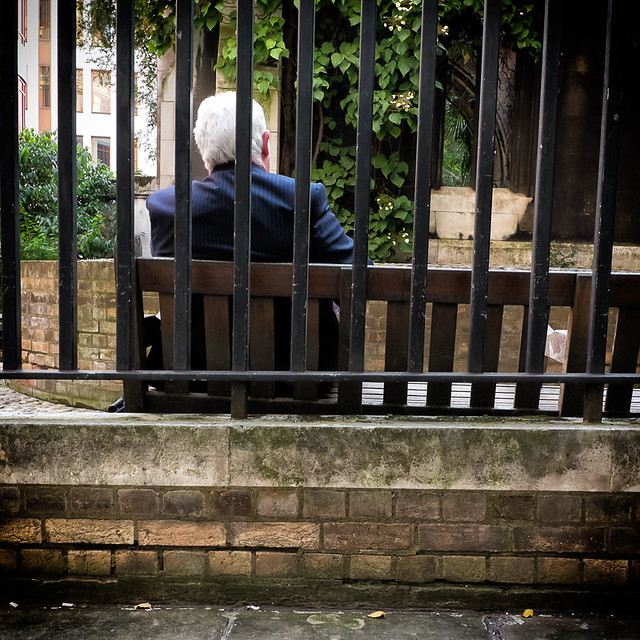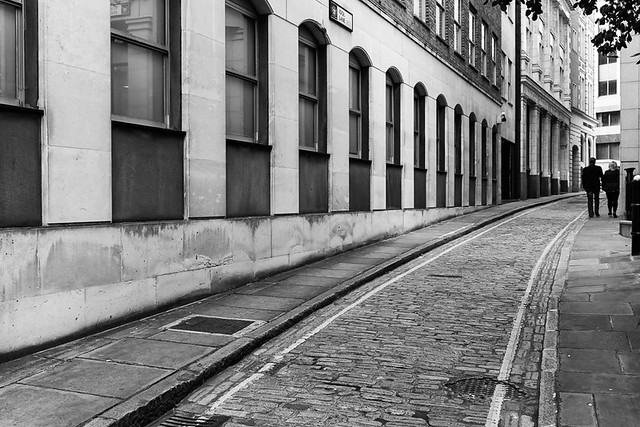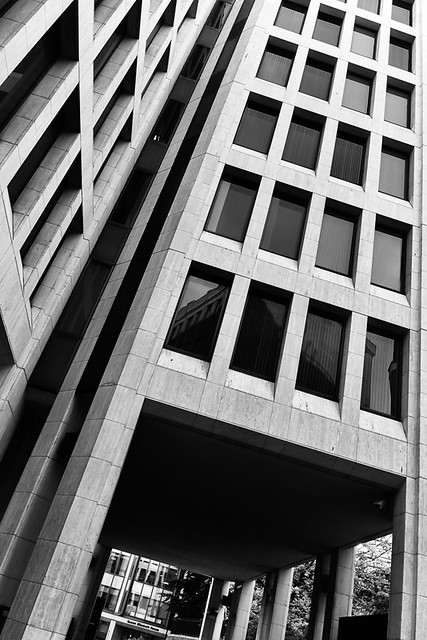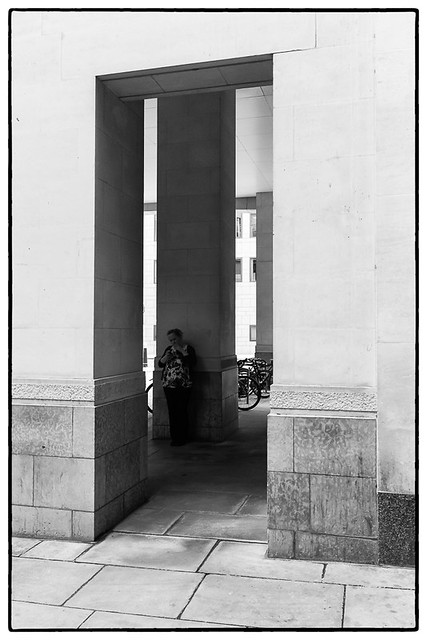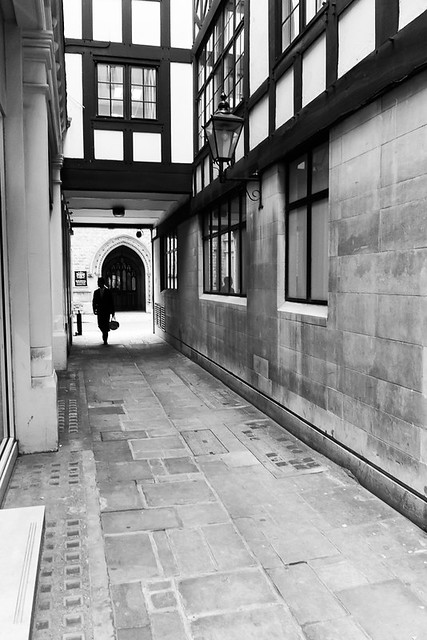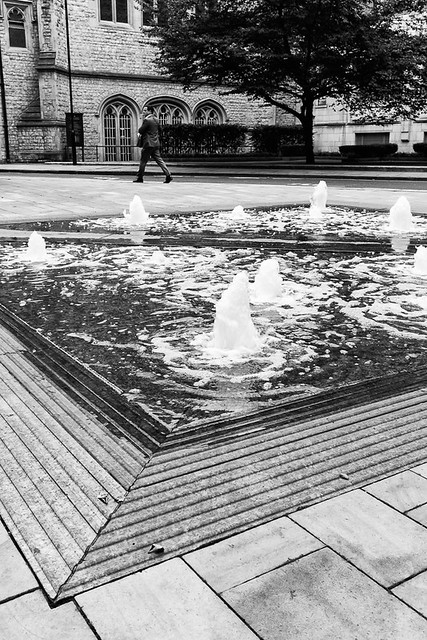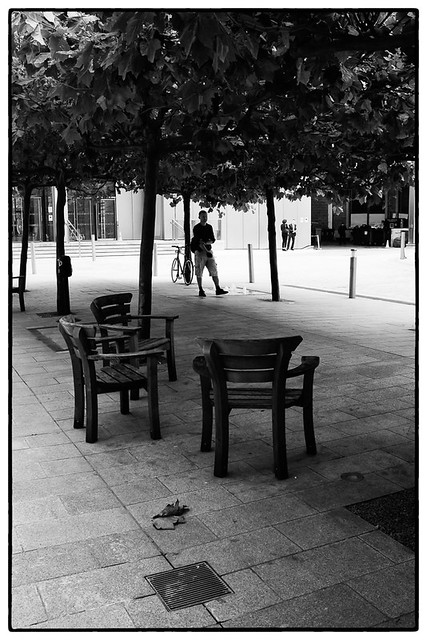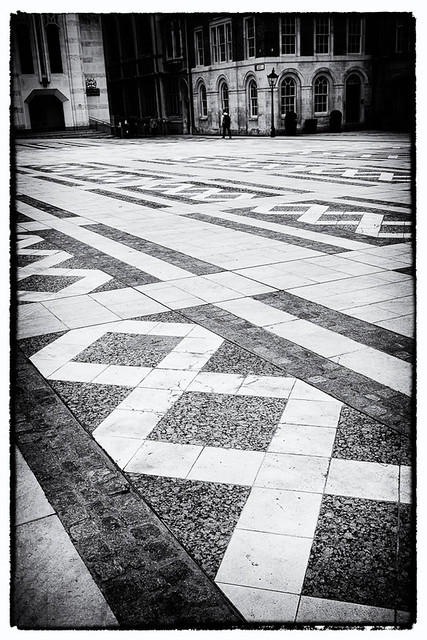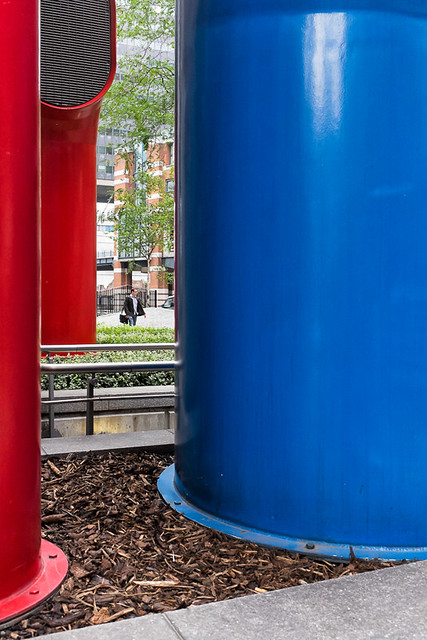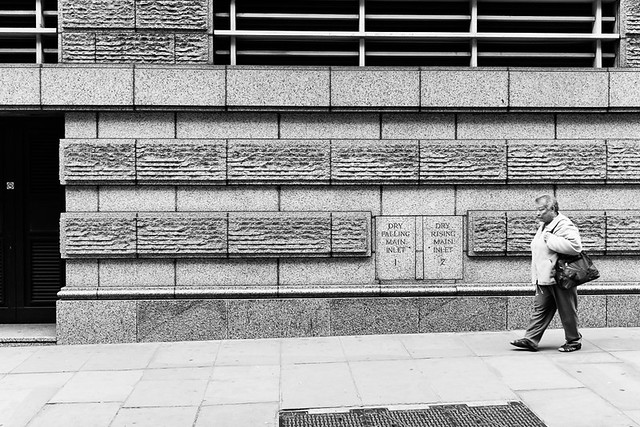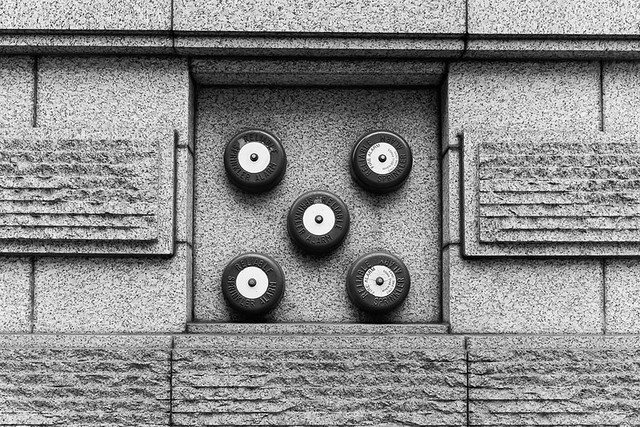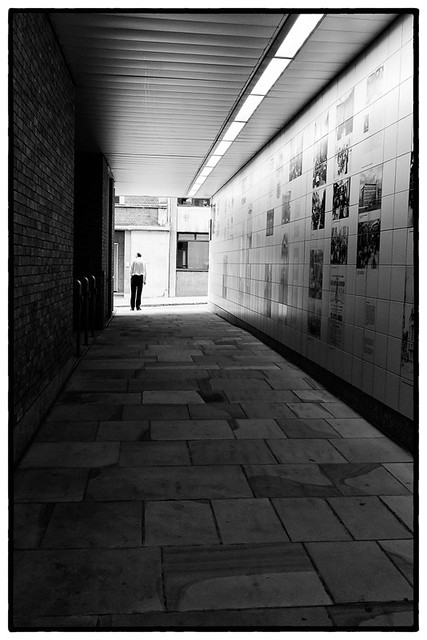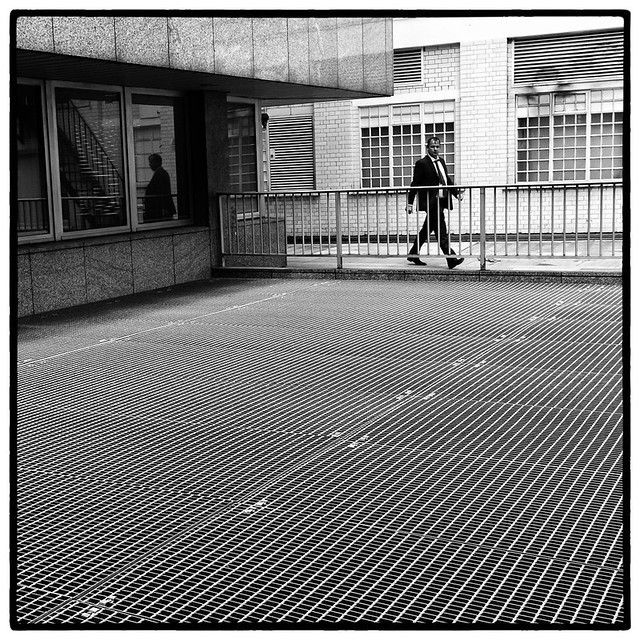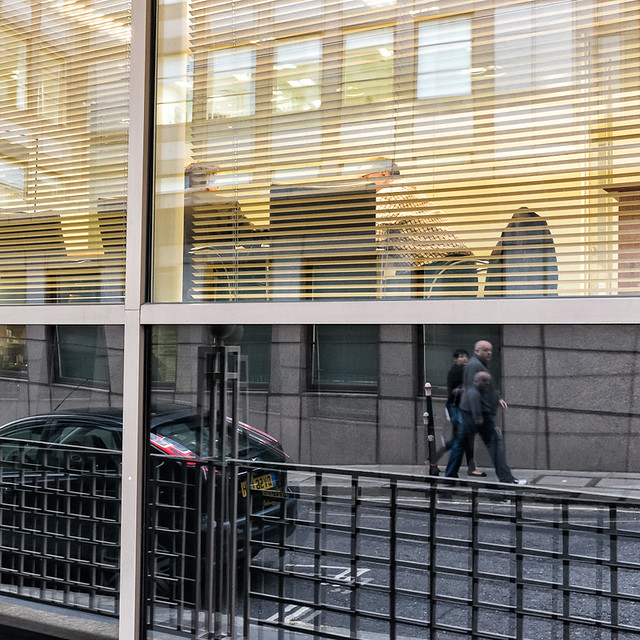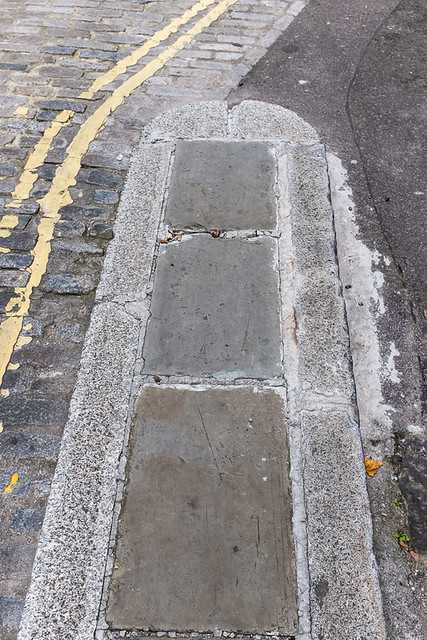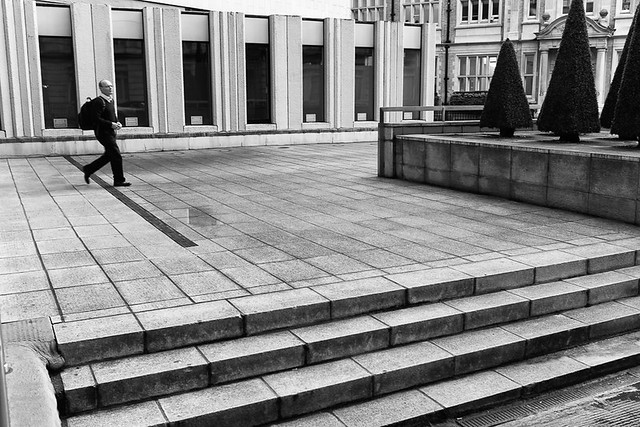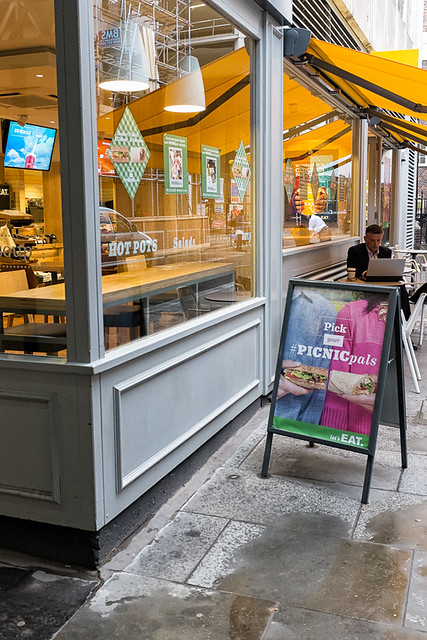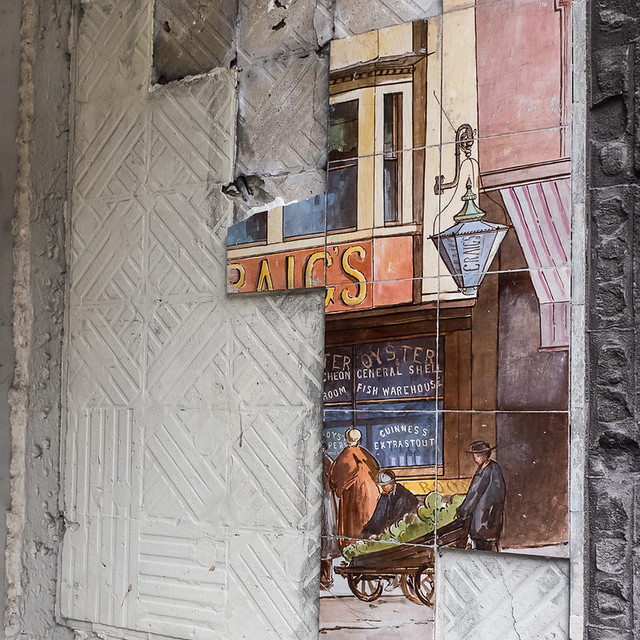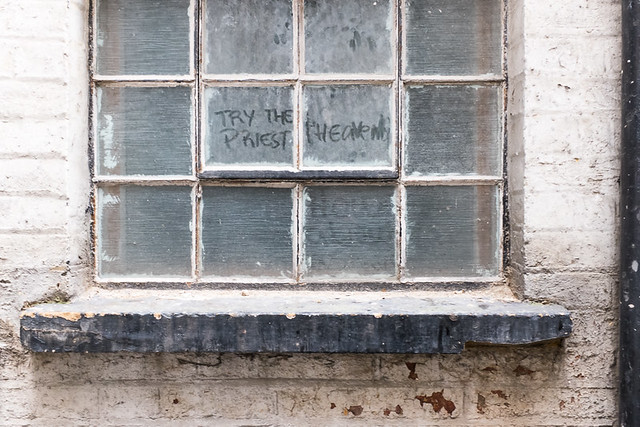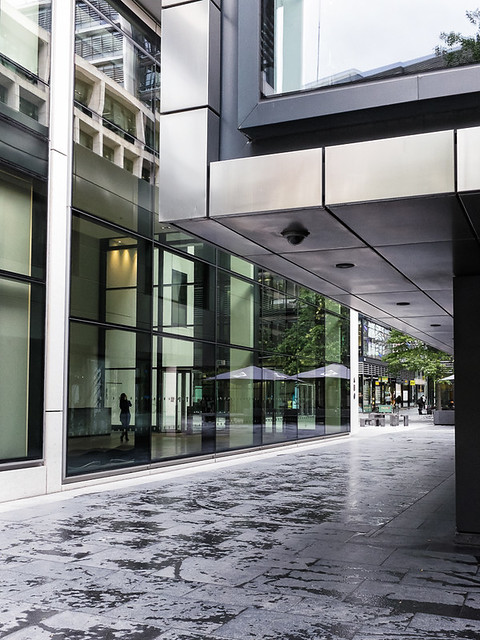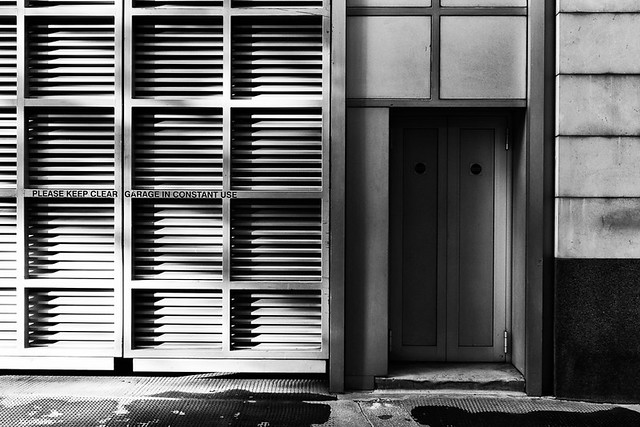I was on holiday during the first week of September, and the second week was split between two areas, south of Fenchurch Street and between London Wall and Gresham Street.
South of Fenchurch Street and connecting Mincing Lane with Rood Lane is Plantation Lane. The street is fairly new, existing only since 2005. A main feature of the street is artwork by Simon Patterson. There is a large wall displaying the surface of the moon, which is illuminated with different colours at various times and text representing different timelines in the pavement running the length of the street.
On Rood Lane I struggled a little for inspiration and ended up with a slightly boring picture of the 20 Fenchurch Street, otherwise known as the Walkie Talkie building. The building has become famous due to the fact that it shape is concentrating light down on the street with negative affect. It has burnt metalwork on cars and one news report was presented whilst frying an egg on the pavement.
Mincing Lane itself is in the background of the image above and noticing that most of the pavement was in shadow, I waited for someone to walk through and create a shadow in the one area bathed in light.
Walking down Mincing Lane and across Great Tower street lies St. Dunstan's Hill where the ruin of St. Dunstan's church is situated. Originally built around 1100 it suffered great damage during the Great fire of London. Repairs after the fire included a steeple designed by Sir Christopher Wren. The church again suffered great damage during the second world war, but was this time not repaired or rebuilt. Wren's steeple remains, along with the north and south walls and the church is now a public garden. It really is a very nice peaceful place amidst the hustle and bustle of the city. Me being me, I photographed something else.
I don't usually jump around chronologically in these posts, but it seems to make sense in this case. The following picture was actually taken the following day, but does actually show a little bit of the church gardens, taken from St. Dunstan's Alley which runs along the north side of the church.
The alley leads to Idol Lane, which goes back up to Fenchurch Street and St. Dunstan's Lane which leads onto St. Mary at Hill. The first picture below is of Idol Lane and the second of St. Dunstan's Lane.
Back to the other end of the Alley and opposite the church lies Cross Lane. This and two of the surrounding streets are the probably the dullest area I have come across so far in the city. I was lucky enough to come away with a half-decent shot here, but have visited the two streets off of here twice so far and not had a clue what to take.When I do return and manage to get some shots, you will see what I mean.
Cross Lane also leads down to Lower Thames Street and here at its eastern end I took the shot below, from stairs down to a car park and street level, after which I called it a day and made my way home.
